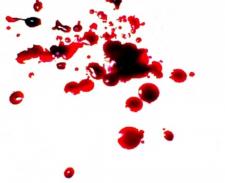Evidence on trial
By Martin Enserink,
Science/AAAS
| 03. 11. 2016
Untitled Document
On 27 February, a court ordered the District of Columbia to pay $13.2 million to Santae Tribble, who spent 28 years in prison based on bogus science. After a taxi driver was murdered in Southeast Washington in 1978, a witness had seen the killer wearing a stocking mask. In a stocking found a block away, police found a hair that matched Tribble's “in all microscopic characteristics,” an analyst for the Federal Bureau of Investigation testified. Chances that it came from someone else were “one in 10 million,” a prosecutor told the jury. Tribble was convicted.
But a DNA analysis 31 years later showed that the 13 hairs in the stocking came from three different people, none of them Tribble, and from a dog. His incarceration wrecked Tribble's life: The judge in this year's decision found that it contributed to severe depression, heroin addiction, and HIV and hepatitis infections, according to The Washington Post. His story is just one of many. Forensic hair analysts have systematically overstated their evidence for decades, the Department of Justice has found, landing...
Related Articles
By Emily Glazer, Katherine Long, Amy Dockser Marcus, The Wall Street Journal | 11.08.2025
For months, a small company in San Francisco has been pursuing a secretive project: the birth of a genetically engineered baby.
Backed by OpenAI chief executive Sam Altman and his husband, along with Coinbase co-founder and CEO Brian Armstrong, the startup—called...
By Jessica Hamzelou, MIT Technology Review | 11.07.2025
This week, we heard that Tom Brady had his dog cloned. The former quarterback revealed that his Junie is actually a clone of Lua, a pit bull mix that died in 2023.
Brady’s announcement follows those of celebrities like Paris...
By Emily Mullin, Wired | 10.30.2025
In 2018, Chinese scientist He Jiankui shocked the world when he revealed that he had created the first gene-edited babies. Using Crispr, he tweaked the genes of three human embryos in an attempt to make them immune to HIV and...
Public domain portrait of James D. Watson by Cold Spring Harbor Laboratory
and the National Human Genome Research Institute on Wikimedia Commons
James Watson, a scientist famous for ground-breaking work on DNA and notorious for expressing his antediluvian opinions, died on November 6, at the age of 97. Watson’s scientific eminence was primarily based on the 1953 discovery of the helical structure of DNA, for which he, Francis Crick and Maurice Wilkins shared the 1962 Nobel Prize in Physiology or...




